Don’t be put off by the name. Fat biking is the new winter exercise craze and an ideal way to stay fit and enjoy spectacular winter landscapes. When your three-season mountain bike is hibernating, rolling in the snow on wide, under-inflated tires lets you pedal gorgeous winter trails and even commute to the nearest mountain hut with low environmental impact.
Winter fat bike trails are everywhere, but first you’ll need the right equipment to get started. These two-wheel proponents of “bigger is better” have frames made to fit 3.5-inch or larger tires and extra wide rims. The wide footprint (coupled with extremely low air pressure) allows you to float over the snow, while studded tires provide additional grip. Experts recommend studded tubeless 4.8’s for better float and grip, and tires should be inflated to 3 or 4 psi (unless otherwise recommended) as anything more will cause deep ruts and tear up the trail.
As far as ideal conditions for fat biking, the general rule of thumb is that when skiing sucks, fat biking is awesome. Crusty snow is the best—and many Nordic centers and local bike clubs now have dedicated fat bike trail grooming machines to provide a harder pack and smoother, faster ride. Remember that you’ll most likely be sharing many of these trails with backcountry skiers, snowshoers, and snowmobilers for trail space, so don’t forget your best trail etiquette when taking your fat bike out for an epic spin this winter. Here are some of our favorite spots.
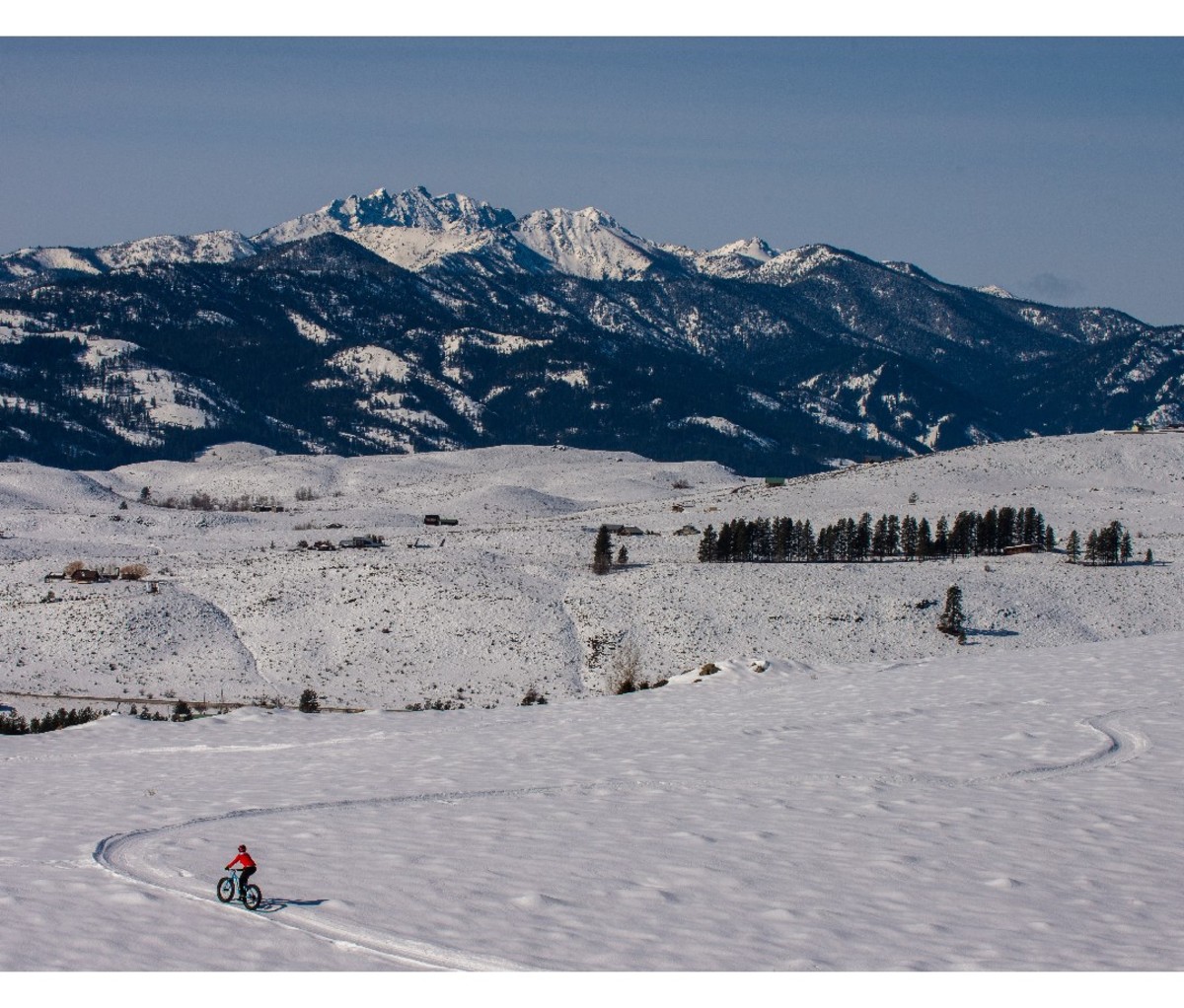
1. Methow Valley, WA
Washington’s premier cross-country ski destination in the foothills of the North Cascades features an extensive, fat bike-friendly trail system originally dedicated to just Nordic skiing. Riding on Methow Trails Fat Bike trails requires a $10 pass ($50 for the season)—or a ski pass will work too. Fat bikes are available for rent at Methow Cycle & Sport and Cascades Outdoor Store located in Winthrop, as well as Goat’s Beard Mountain Supplies and North Cascades Cycle Werks in Mazama. Information on which trails are open to fat bikes is available on the Methow Trails grooming report. You’ll need a dedicated fat bike with tires wider than 3.6 inches and pressure under 10 psi. For a fun fat bike overnight or hut-to-hut, check out the Rendezvous Huts.
Learn More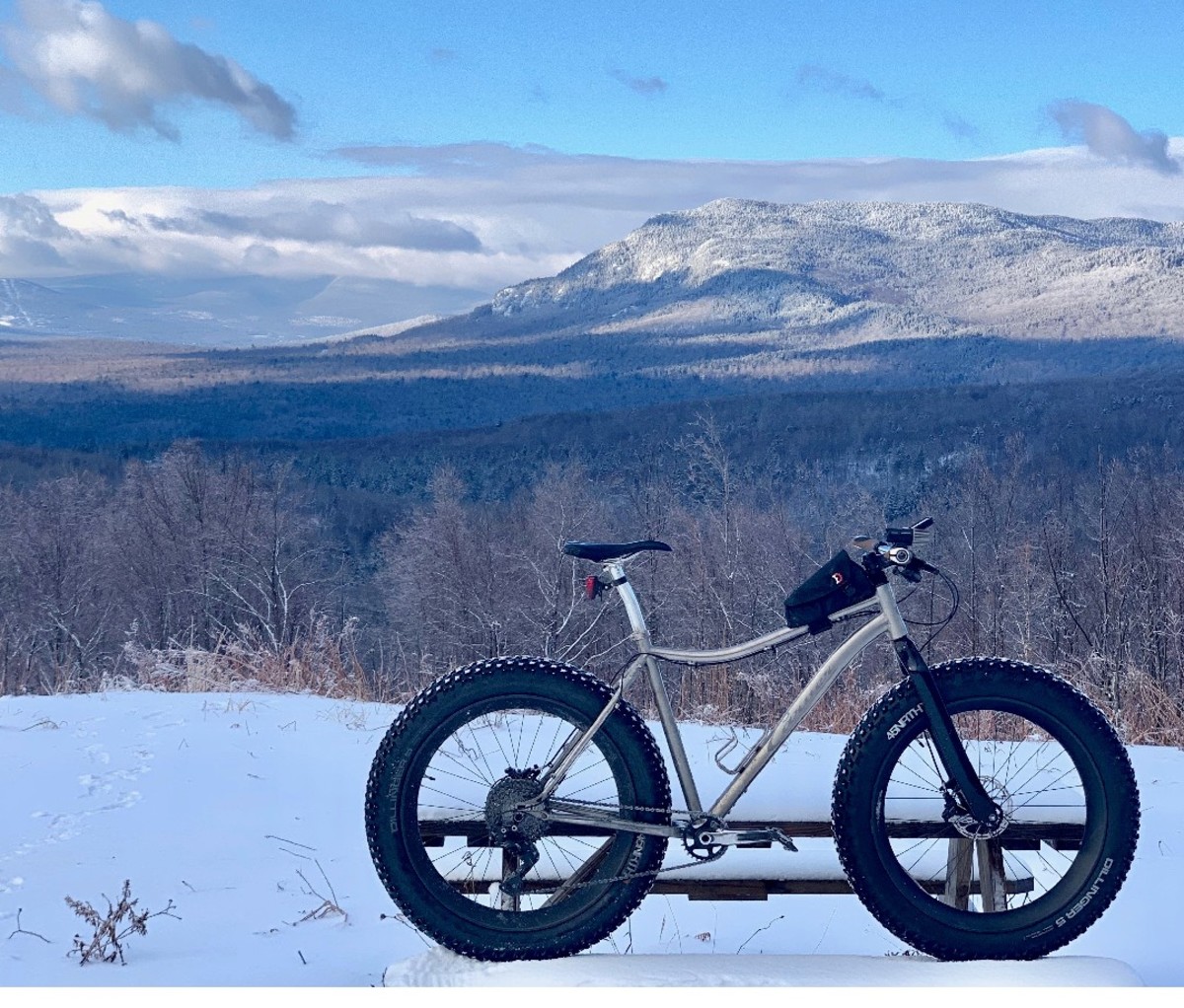
2. Carrabassett Valley, ME
Home to the iconic ski destination of Sugarloaf, Maine’s greater Carrabassett area has a wealth of fat bike trails. The Carrabassett Region NEMBA (New England Mountain Bike Association) grooms the trails off the Narrow Gauge Trail while the town grooms the Narrow Gauge Trail itself. Sugarloaf has one loop available at the Outdoor Center. There are some winter-only trails that are exclusive for winter fat biking. Look for updates on the CRNEMBA Facebook Page. Maine Huts & Trails has an extensive system of Nordic and Fat Bike trails, but budget limitations impact the grooming schedule. Check their Facebook Page for updates. Before heading out, also visit NEMBA’s list of the Valley’s open trails and frequently updated conditions.
Learn More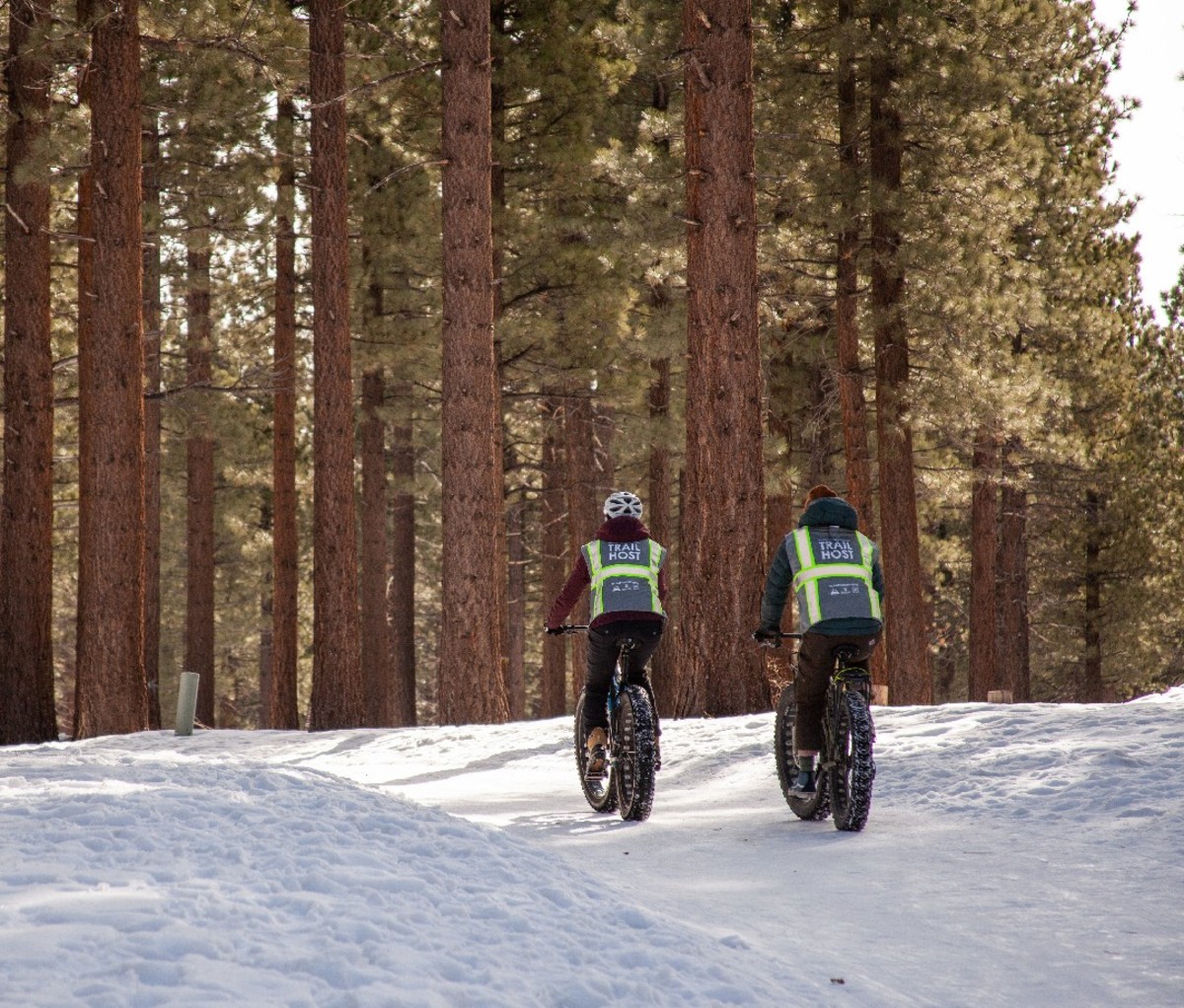
3. Mammoth Mountain and Mammoth Lakes, CA
Mammoth Mountain has world class skiing, but there’s plenty to do on “rest” days. Winter fat bikes (including fat-e bikes) are allowed on the groomed Over-Snow-Vehicle (OSV) trail network managed by Inyo National Forest. There are also several winter trail-systems maintained by the Town of Mammoth Lakes and local volunteers which provide opportunities for traditional fat bikes and other non-motorized users. Only purpose-built fat bikes with 3.8-inch wide tires (or wider) with a recommended tire pressure of 6-10 PSI are allowed on trails. For Mammoth Lakes area’s motorized and non-motorized info and grooming updates, see the map hosted on mammothtrails.org. The best-kept secret here: Mono County is partnering with the Humboldt-Toiyabe National Forest and local volunteers on a pilot winter-trail system with access to Buckeye Hot Springs day-use area. The eight-mile, out-and-back trail to the undeveloped hot springs takes you through the beautiful Bridgeport Valley.
Learn More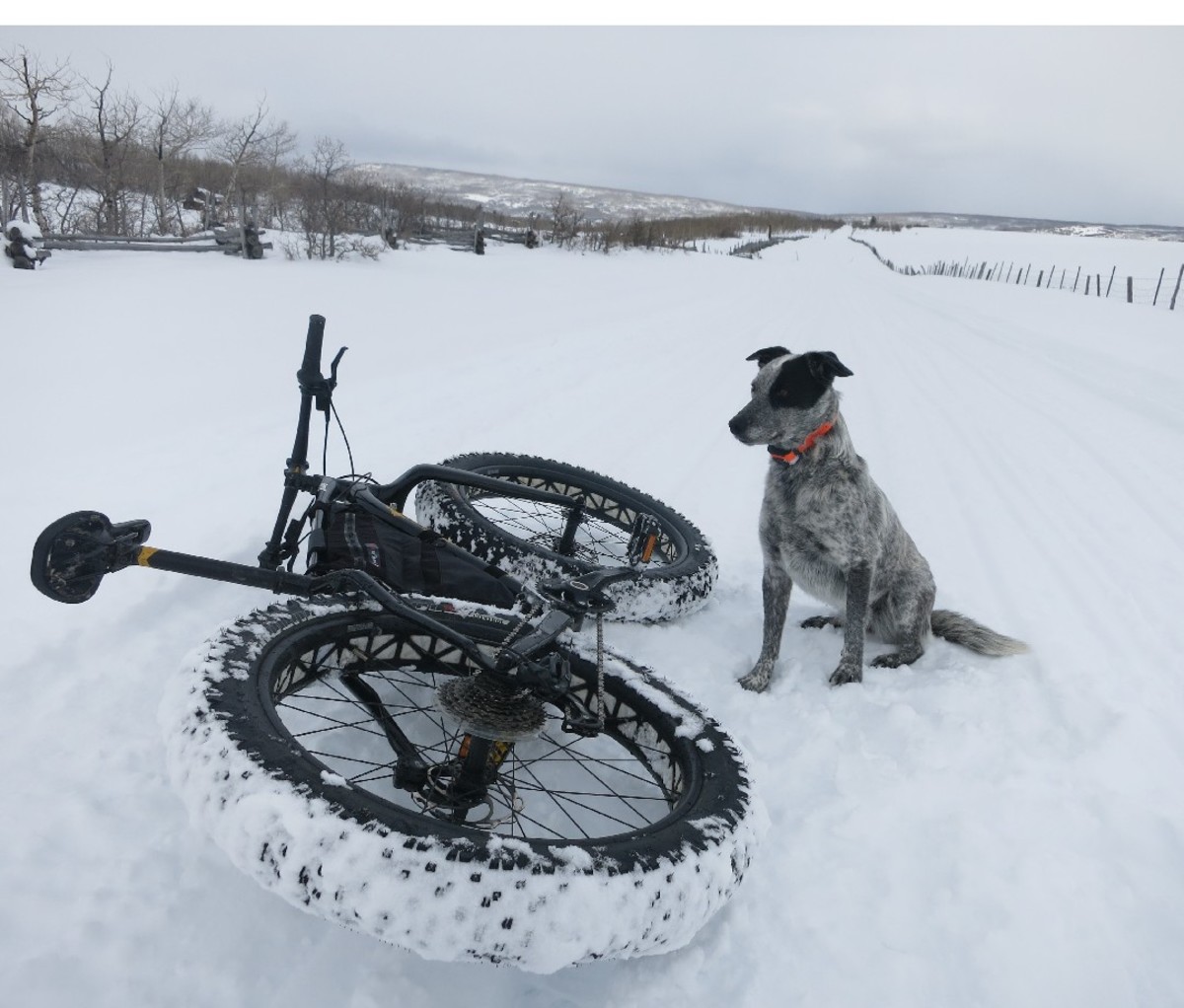
4. San Juan Huts: Ridgeway, CO
Tucked in the Rockies of southwestern Colorado, San Juan Huts are renowned for deep powder and phenomenal backcountry hut-to-hut skiing—but you can also travel to several of these huts on a fat bike. The ride into Blue Lakes Hut is about five miles from the trailhead depending on conditions. For a shorter ride, the Spring Creek Hut (with an approach that’s just over a mile) is a fat biker’s paradise near Divide Rd. which is groomed during the winter. The nightly cost per person is $30 and the huts sleep up to eight. Based in Ridgeway—with huts extending from the high mountains around Ouray, Telluride and Durango—San Juan Huts offers interstate access all the way to Utah’s mountain bike capital of Moab.
Learn More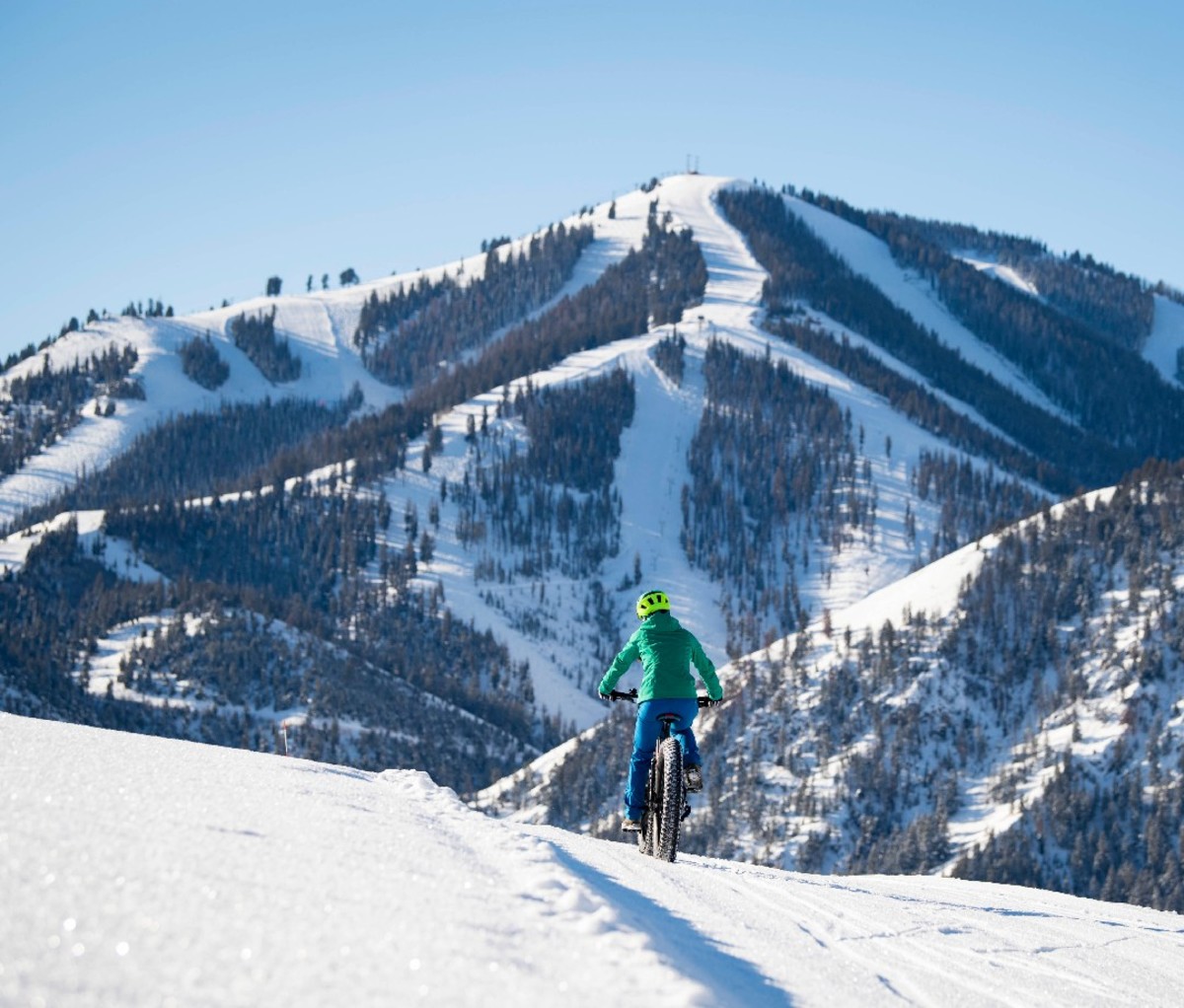
5. Sun Valley, ID
It’s hard to picture a more fat bike friendly enclave than Sun Valley. The area’s trail system is, in a word, expansive. Our favorite fat biking find here is The Wood River Trail (WRT)—a 20-plus mile, groomed, multi-use path which provides non-motorized access to the Wood River Valley communities of Bellevue, Hailey, Ketchum and Sun Valley. Sun Valley Nordic Center offers over ten miles of fantastic fat bike friendly terrain, including the Dog Loop, Boundary Loop, Hyndman View, Diamondback, and the White Clouds Loop. Nordic grooming machines lay down fresh corduroy about 10-12 feet wide, which provides a great surface for skate skiing as well as fat biking. A day pass is $15 for an adult/senior and $10 for kids. Three outdoor gear stores in Ketchum offer an excellent selection of fat bikes rentals.
Learn More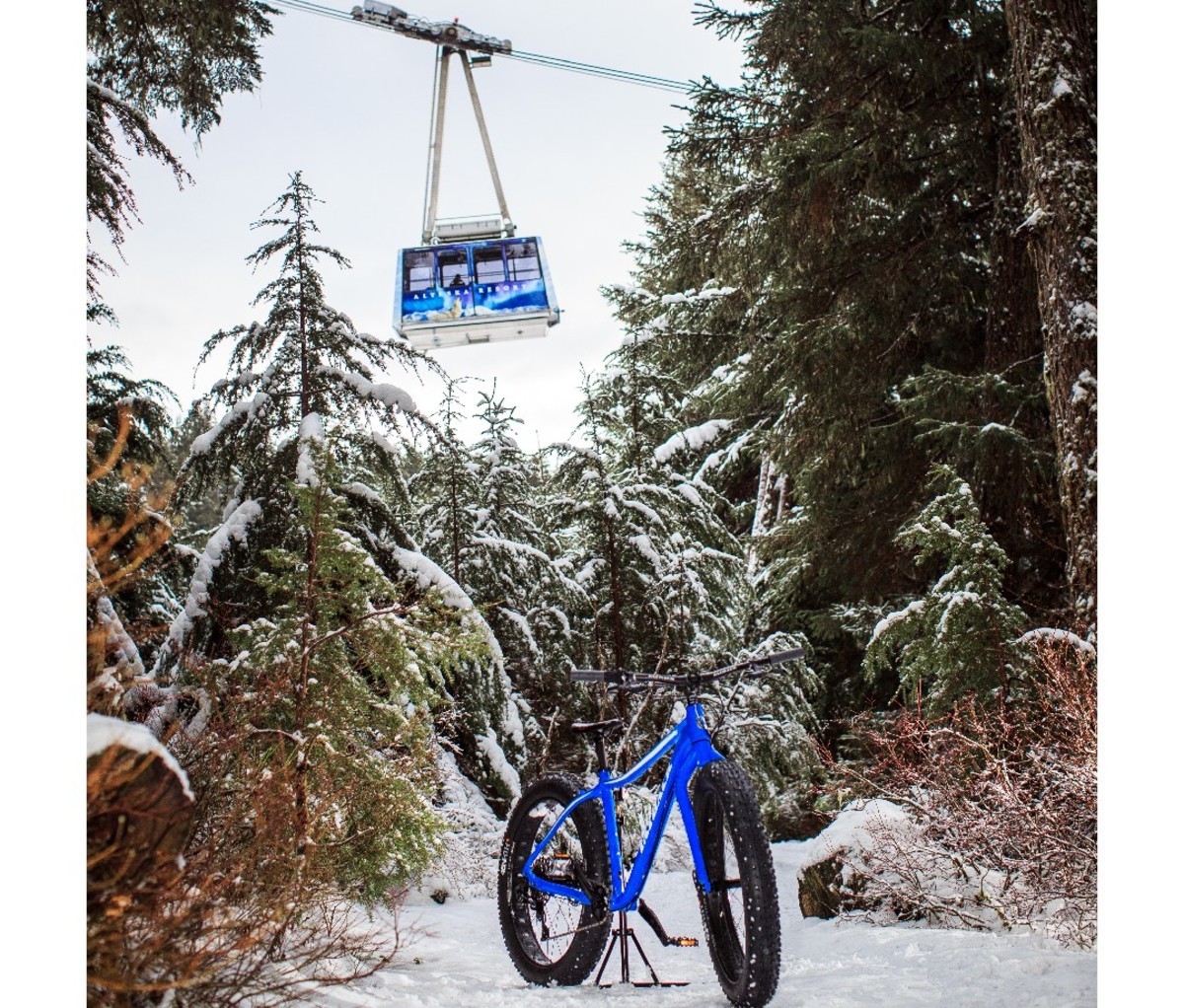
6. Alyeska Resort: Girdwood, AK
Fat biking was invented in Alaska. During the Iditarod in 1987, mountain bikers “adapted” their rides for the first Iditabike—a 200-mile pedal through the Alaskan backcountry on snowmobile and dog mushing trails. Fat bikes are integral to year-round recreation and commuting all over the state, but some of our favorite trails are hiding out at the lovely Alyeska Resort near the town of Girdwood (about 40 miles from Anchorage). Here you can rent a bike with studded tires, hire a guide, and pedal through snow-covered meadows and pristine forests. When you finish, head to Alaska’s first Nordic Spa, a 50,000 square-foot hydro paradise. Amp your adventure on a multi-day hut-to-hut ride in Alaska’s White Mountains National Recreation Area, offering 250 miles of maintained winter trails and 14 public recreation cabins and shelters maintained by the Bureau of Land Management.
Learn More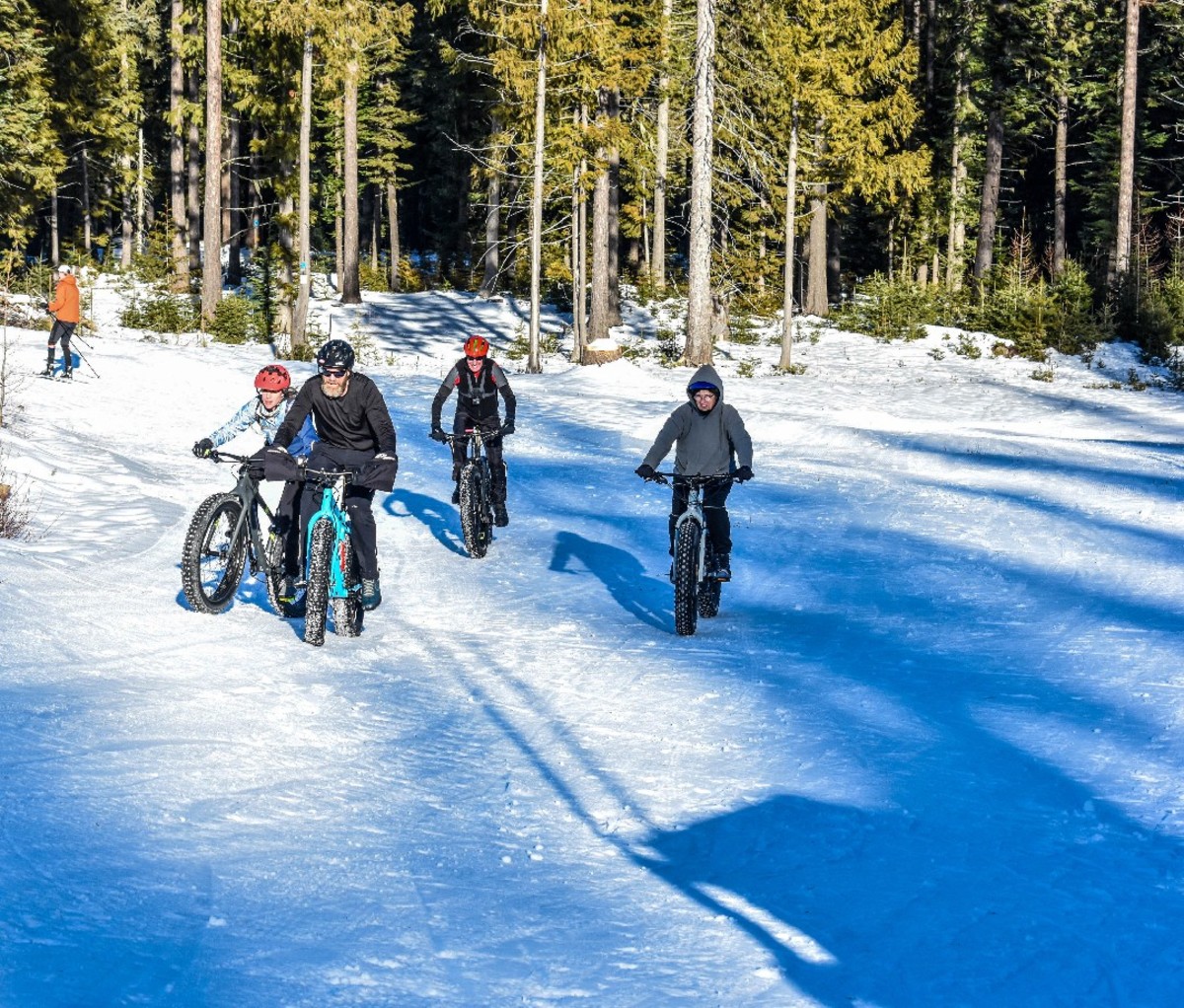
7. 49° North Mountain Resort: Chewelah, WA
The Nordic Center at 49° North Mountain Resort in northeastern Washington is quickly becoming one of the prime fat bike areas in the country. This pristine area (about an hour’s drive north of Spokane) has miles of groomed trails for fat bikes that are often challenging—but that’s part of the fun. The Nordic Center is located in a cozy yurt near to the alpine ski area. Bikers and others can enjoy about 15 miles of groomed trails, with additional ungroomed snowshoe paths weaving through the dense Coleville National Forest. The yurt is open Friday through Sunday, and trail fees are $14 (Friday-Sunday) and $10 (Monday-Thursday). For a rental bike, visit North Division Bicycle in North Spokane. And for some timely competition, the annual 7k Chewelah Peak Challenge Fat Tire Bike Race is happening on January 30.
Learn More8. Never Summer Nordic: Walden, CO
State Forest Parks, near Walden, CO (a few hours northwest of Boulder), make up over 70,000 acres of prime Rocky Mountain backcountry in the Medicine Bow Range. Never Summer Nordic operates eight yurts and two cabins in the park—and you can ride fat bikes to almost every yurt during the winter on groomed snowmobile trail. From North Park Yurts, winter cyclists enjoy about 10 miles of spectacular scenery along the main access road. For some added elevation, the upper and lower Montgomery Yurts offer a gain of 620 feet during a three-mile trip from the parking lot. Yurts and huts are stocked with beds, wood stoves and cooking supplies.
Learn More9. Crested Butte, CO
Crested Butte is arguably one of the best spots for fat biking in the county. You’ll find a variety of both groomed and user-compacted trails here—and although cycling isn’t allowed on some of them, all valley drainages are open to fat bikes as it’s public land. Crested Butte Mountain Bike Association posts conditions on over 50 miles of free-use trails here—grooming courtesy of the Crested Butte Mountain Bike association. Popular trails like gorgeous Keebler Pass are multi-use, so you can expect to be sharing space with snowmobilers and hikers. The Gothic Trail, about 15 minutes from town, is restricted to non-motorized vehicles and nicely groomed for fat bikes. For a fat bike rental ($50 per day, $25 for a half-day), visit The Alpineer.
Learn More10. Rikert Nordic Center: Ripton, VT
In the heart of the Green Mountain National Forest is the Rikert Nordic Center—a true find just 20 minutes from Middlebury College, and tucked in those same rolling hills where poet Robert Frost found inspiration. The area offers some of the best winter walking, skiing, and hiking in New England, with over 30 miles of trails for skate and classic skiing, snowshoeing—and fat biking. Call in advance for rentals (and fat biking conditions) at the Nordic center, equipped with a full-service rental shop, including adaptive fat bikes.
Learn MoreOther options
Check with your local ski hill about fat bike opportunities. Many ski areas not only groom trails for fat bikers, but are also hosting competitions, events and demos. You’ll find plenty of Fat Bike events in places like Michigan, Wisconsin, and Minnesota. Fat-Bike.com also compiles listings for events around the country.
from Men's Journal https://ift.tt/3fZmcHS


0 comments